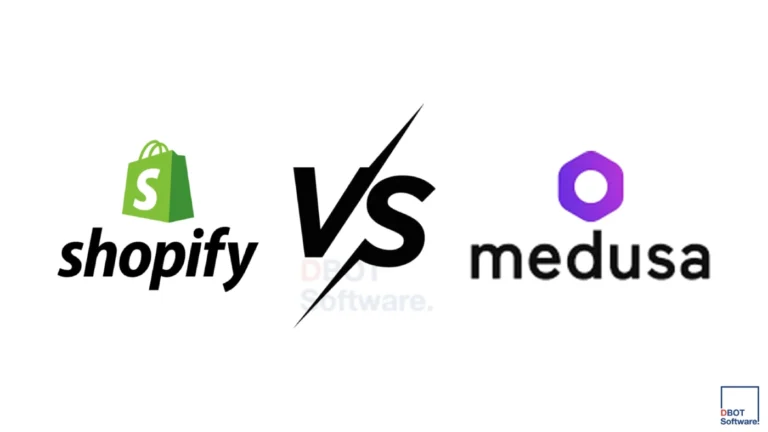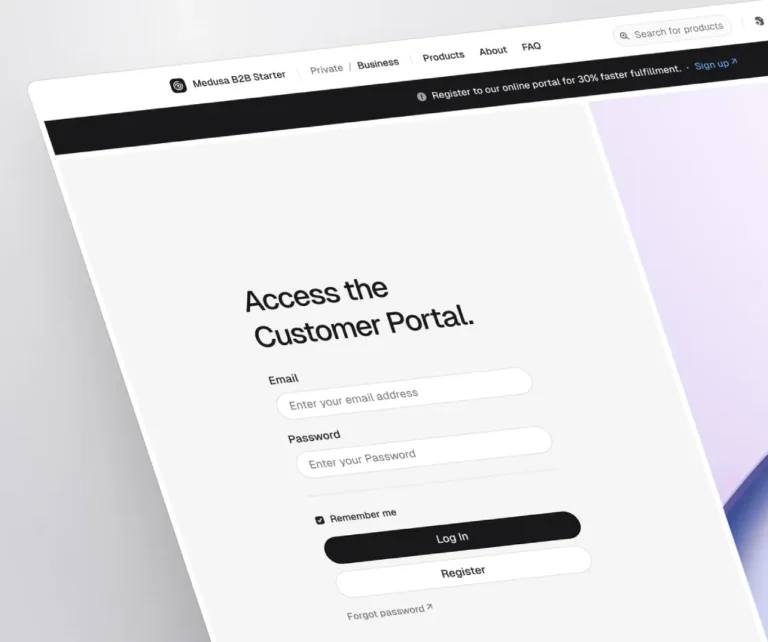Every day we read headlines about AI doing everything. From writing emails to composing music, but how many organizations have moved past the gimmicks and built genuine, intelligent automations? And by “implementing AI,” we’re not talking about keeping ChatGPT open in one browser tab while you manually copy-paste responses into your CRM. We mean embedding machine learning models and rule-based engines into your core workflows so that repetitive tasks, data analysis, and even decision-making happen without human hand-holding. In the sections that follow, you’ll discover practical steps to transition from AI curiosity to AI capability, and why partnering with DBot Software can accelerate that journey.
Beyond the Buzz: Who’s Really Automating with AI?
Most companies dabble, running a prompt here or a script there, but only a few have woven AI into daily operations. According to recent industry surveys, while 84% of business leaders recognize AI’s potential, only about 30% have successfully implemented enterprise-wide AI solutions. Real adopters share three critical traits:
- Process Clarity: They know exactly which workflows need automation and why, having mapped out their entire operational ecosystem.
- Data Discipline: Their data is clean, accessible, and well-structured, with robust governance policies and regular quality checks.
- Iterative Mindset: They start small, measure impact, then scale, understanding that AI implementation is a journey of continuous improvement and adaptation.
- Change Management: They invest in training and communication to ensure smooth adoption across teams.
- ROI Focus: They track clear metrics and KPIs to demonstrate value and justify expansion.
If you check those boxes, you’re ready to turn AI talk into AI traction and join the ranks of organizations seeing real returns on their AI investments.
Before You Dive In: A No-Code AI Quick Win for Everyone

Not a developer? No problem. Before we get into more technical automations, here’s a zero-code project you can launch today by watching some YouTube videos. No programming skills required, just a strategic approach to automation:
- Pick a trigger
- Think: “New support ticket in Gmail,” “New lead in Google Sheets,” or “Form response in Typeform.”
- Consider: Customer feedback submissions, social media mentions, or calendar events
- Focus on: High-volume, repetitive tasks that drain team productivity
- Add an AI step
- Zapier: Use the “AI by Zapier” or “OpenAI (GPT-3/4)” action to summarize, classify, or generate text. Perfect for content optimization and data processing.
- Make: Insert the “HTTP → OpenAI” module to call any ChatGPT or embedding endpoint. Ideal for complex workflows and custom integrations.
- n8n: Drag in the “OpenAI” node for quick access to chat completions, classification, or even image generation. Great for open-source enthusiasts.
- Advanced Options: Consider specialized AI platforms for specific needs like computer vision or natural language processing
- Choose where it lands
- Send the AI’s output to Slack/Teams, create a Trello/Asana card, or update a row in your CRM spreadsheet automatically.
- Set up conditional logic to route different outputs to appropriate team members
- Implement error handling and notification systems for failed automations
- Create audit trails for compliance and optimization purposes
In 30 minutes, you could build:
- A meeting-notes bot that summarizes calls and posts highlights to your team channel
- An email classifier that tags and prioritizes inbound queries based on sentiment and urgency
- A content-idea generator that fills a “Blog Topics” sheet each Monday with SEO-optimized suggestions
- A customer feedback analyzer that categorizes responses and alerts relevant departments
- A social media monitor that tracks brand mentions and generates response drafts
All you need is a free Zapier, Make, or n8n account and a quick YouTube tutorial. These platforms offer extensive templates and community support to get you started. Once you’ve tasted no-code AI and seen its impact on productivity, you’ll understand why businesses partner with DBot Software to scale up into fully custom, enterprise-grade solutions that can transform entire operations.
1. Map Your Processes & Data Sources
Why it matters: You can’t automate what you haven’t mapped, and poorly mapped processes lead to inefficient AI implementations. Quick Tip:
- Sketch out 3–5 core workflows (e.g., lead qualification, invoice processing, support ticket triage, customer onboarding, inventory management).
- List where data lives (CRM, spreadsheets, email, website forms, internal databases, cloud storage).
- Document data formats, update frequencies, and access permissions.
- Identify integration points and potential bottlenecks.
Next Step: Capture this on a flowchart (I recommend FigJam) or even a whiteboard photo. Add data flow arrows, system dependencies, and process owners. This blueprint guides your AI models and automation scripts while ensuring comprehensive coverage.
2. Start with a Smart Chatbot for FAQs
Why it works everywhere: Every business gets repetitive questions, and AI chatbot solutions can handle 70% of standard inquiries. Quick Tip:
- Export your top 100 support tickets or email FAQs into a CSV.
- Categorize questions by department, urgency, and complexity level.
- Load them into a no-code chatbot platform (e.g., Dialogflow, OpenAI’s Chat Completions).
- Train it to answer or point to internal knowledge-base articles.
- Set up escalation paths for complex queries.
- Implement multilingual support for global reach.
Outcome: Free up 20–30% of your support team’s time within weeks, improve response times by 60%, and maintain 24/7 availability.
See our AI-Driven Automation service.
3. Automate Data Extraction & Reporting
Why it matters: Manual copy-pasting is error-prone, slow, and wastes valuable human resources. Quick Tip:
- Use OCR + NLP (UiPath, Power Automate AI Builder) to extract key fields from invoices or forms.
- Implement validation rules to ensure data accuracy.
- Schedule a daily script to send a “Top 5 KPIs” dashboard via Slack or email.
- Set up automated alerts for data anomalies or threshold breaches.
- Create custom report templates for different stakeholders.
Outcome: Never miss a late invoice, get instant insights on sales or inventory, and reduce data entry errors by 95%.
4. Personalize Marketing at Scale
Why it works: Personalized emails convert ~4× better and AI marketing solutions can analyze customer behavior patterns. Quick Tip:
- Connect your CRM (HubSpot, Salesforce) to an AI content engine (OpenAI, Jasper) to auto-generate subject lines and email bodies.
- A/B test small variations (“Hey [Name]” vs. “Hi [Name], how’s [Company] doing?”).
- Implement dynamic content blocks based on user behavior.
- Use predictive analytics to optimize send times.
- Create segment-specific messaging templates.
Outcome: Boost open rates by 10–15% with no extra headcount and increase click-through rates by 25%.
5. Automate Routine HR Tasks
Why it matters: HR teams drown in paperwork and repetitive administrative tasks. Quick Tip:
- Deploy an AI assistant to screen resumes for your top 5 must-have skills and auto-rank candidates.
- Add a chatbot for common HR questions (vacation policy, expense reimbursement).
- Automate onboarding document generation and distribution.
- Set up automated performance review reminders and data collection.
- Create self-service portals for common employee requests.
Outcome: Cut screening time by 50%, give employees instant policy answers, and reduce HR administrative workload by 40%.
6. Use Predictive Analytics for Inventory & Maintenance
Why it works everywhere: Overstock and downtime both cost money, and AI can optimize both. Quick Tip:
- Feed historical sales or maintenance logs into an AutoML platform (Vertex AI, SageMaker).
- Incorporate seasonal trends and external factors into predictions.
- Set up alerts: “Stock of part X will run out in 10 days” or “Machine Y needs service next week.”
- Create dynamic reorder points based on lead times and demand patterns.
- Monitor supplier performance and delivery reliability.
Outcome: Avoid stockouts, reduce emergency repairs, and save up to 20% on holding costs while improving supply chain reliability by 35%.
7. Build an AI-Powered “Decision Hub”
Why it matters: Fragmented insights slow decision-making and reduce operational efficiency. Quick Tip:
- Consolidate your chatbot, reports, and alerts into one Slack/Teams channel.
- Create a slash-command (e.g.,
/forecast revenue 30d) that queries your data lake or Google Sheets via an AI endpoint. - Implement role-based access controls for sensitive data.
- Set up automated daily briefings for key metrics.
- Enable natural language queries for business intelligence.
Outcome: Managers get real-time answers without toggling between tools, reducing decision time by 40% and improving data-driven decision making.
When to Call in the Experts?
If you’re ready to move beyond quick wins and need enterprise-grade AI solutions that drive real business transformation:
- Custom Integrations (ERP, legacy systems, bespoke APIs, data warehouses, multi-cloud environments)
- Robust ML Pipelines (feature engineering, model retraining, automated testing, performance monitoring, data validation)
- Secure, Scalable Deployments (cloud-native microservices, containerization, load balancing, disaster recovery)
- End-to-end Project Management (agile sprints, DevOps automation, compliance, documentation, knowledge transfer)
- Enterprise AI Architecture (scalable infrastructure design, security protocols, integration frameworks)
- MLOps Implementation (continuous integration/deployment, model versioning, automated retraining)
…then DBot Software is your partner of choice. We combine local presence in Thailand with European-managed expertise to deliver on-time, on-budget, enterprise-grade AI solutions. Our team of ML engineers and solution architects brings decades of experience implementing AI across industries, ensuring your project’s success from initial planning through deployment and beyond.
Ready to automate beyond the basics?
Our enterprise AI solutions have helped companies reduce operational costs by 40% and increase productivity by 60%.
Book a free AI discovery call with DBot Software ›Frequently Asked Questions
Successful AI adoption requires a systematic approach focused on tangible results. Smart planning and gradual deployment help organizations maximize their AI investments while minimizing risks.
Consider forming dedicated AI teams that blend technical expertise with domain knowledge. These cross-functional groups ensure AI solutions align with real business needs rather than chasing technological trends.
A manufacturing company recently transformed their quality control process by implementing computer vision AI. The system now detects product defects with 99% accuracy, reducing inspection time by 75%.
Set clear performance metrics before launching any AI project. Track key indicators like processing speed improvements, error reduction rates, and cost savings to demonstrate concrete value to stakeholders.
Modern AI systems fall into four distinct categories based on their capabilities and mission scope. Reactive machines represent the most basic type, making decisions purely on current data without storing past experiences.
Limited memory AI builds upon reactive systems by incorporating historical data to improve decision-making, making them ideal for predictive analytics and pattern recognition.
Theory of mind systems represent the next evolution, designed to understand human emotions and adapt their responses accordingly. While still emerging, these systems show promise in advanced human-computer interactions.
The most advanced category, self-aware AI, remains theoretical. These systems would possess consciousness and self-knowledge, though current technology has not yet achieved this level of sophistication.
AI solutions for business are tools that use artificial intelligence to automate tasks, analyze data and optimize operations across company departments. These include machine learning systems for customer service, predictive analytics for sales forecasting and AI agents for process automation. A comprehensive suite of AI tools can enhance decision-making, boost productivity and deliver personalized experiences while reducing operational costs and human error.
Your business is AI-ready when you have clean, structured data, clear business objectives, and technical infrastructure to support AI systems. Evaluate your team’s digital skills, assess data quality and security measures, and examine if your processes need modernization. Start by identifying specific challenges AI could solve and ensure your organization’s culture embraces technological change.
How to Implement AI Solutions in Your Business? Successful AI adoption requires a systematic approach focused on tangible results. Smart planning and gradual deployment help organizations maximize their AI investments while minimizing risks.
Consider forming dedicated AI teams that blend technical expertise with domain knowledge. These cross-functional groups ensure AI solutions align with real business needs rather than chasing technological trends.
A manufacturing company recently transformed their quality control process by implementing computer vision AI. The system now detects product defects with 99% accuracy, reducing inspection time by 75%.
Set clear performance metrics before launching any AI project. Track key indicators like processing speed improvements, error reduction rates, and cost savings to demonstrate concrete value to stakeholders.
What are the four types of AI systems? Modern AI systems fall into four distinct categories based on their capabilities and mission scope. Reactive machines represent the most basic type, making decisions purely on current data without storing past experiences.
Limited memory AI builds upon reactive systems by incorporating historical data to improve decision-making, making them ideal for predictive analytics and pattern recognition.
Theory of mind systems represent the next evolution, designed to understand human emotions and adapt their responses accordingly. While still emerging, these systems show promise in advanced human-computer interactions.
The most advanced category, self-aware AI, remains theoretical. These systems would possess consciousness and self-knowledge, though current technology has not yet achieved this level of sophistication.
What exactly are AI solutions for business? AI solutions for business are tools that use artificial intelligence to automate tasks, analyze data and optimize operations across company departments. These include machine learning systems for customer service, predictive analytics for sales forecasting and AI agents for process automation. A comprehensive suite of AI tools can enhance decision-making, boost productivity and deliver personalized experiences while reducing operational costs and human error.
How do I know if my business is ready for AI? Your business is AI-ready when you have clean, structured data, clear business objectives, and technical infrastructure to support AI systems. Evaluate your team’s digital skills, assess data quality and security measures, and examine if your processes need modernization. Start by identifying specific challenges AI could solve and ensure your organization’s culture embraces technological change.
What are the initial costs of implementing AI?
Start with data processing automation in your most time-consuming department. Look for repetitive tasks that consume staff hours and have clear, measurable outcomes. Common entry points include automating customer support responses, streamlining invoice processing, or setting up AI agents for basic data entry. Choose a contained project that affects one team to minimize risks while demonstrating quick wins.
Return on investment timelines vary based on the type of AI implementation: process automation shows results in 3-6 months, customer service AI in 6-12 months, while strategic decision-making AI takes 12-24 months to deliver value. Basic chatbots and data processing tools provide the fastest returns through reduced operational costs, whereas complex AI systems require longer periods to demonstrate meaningful business impact.






